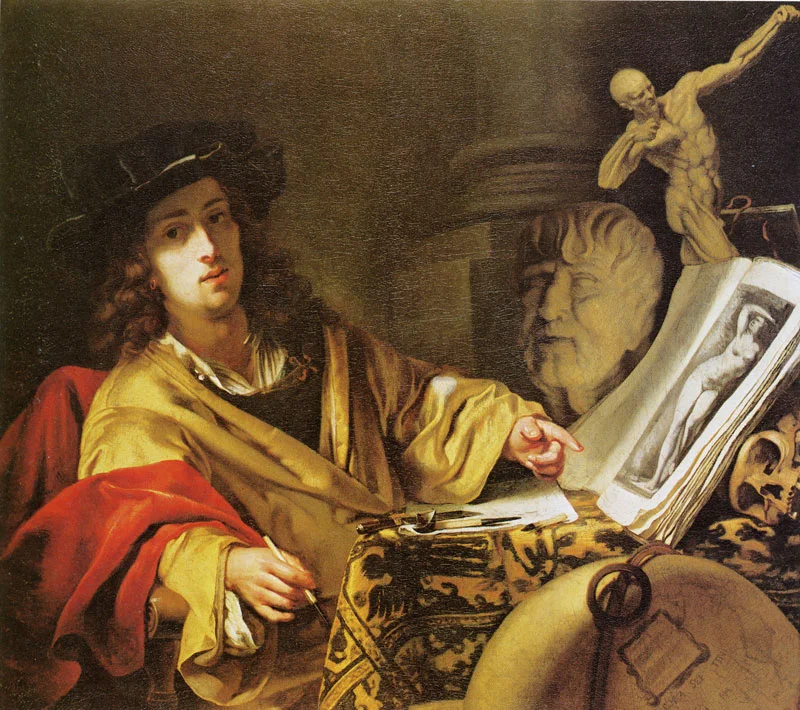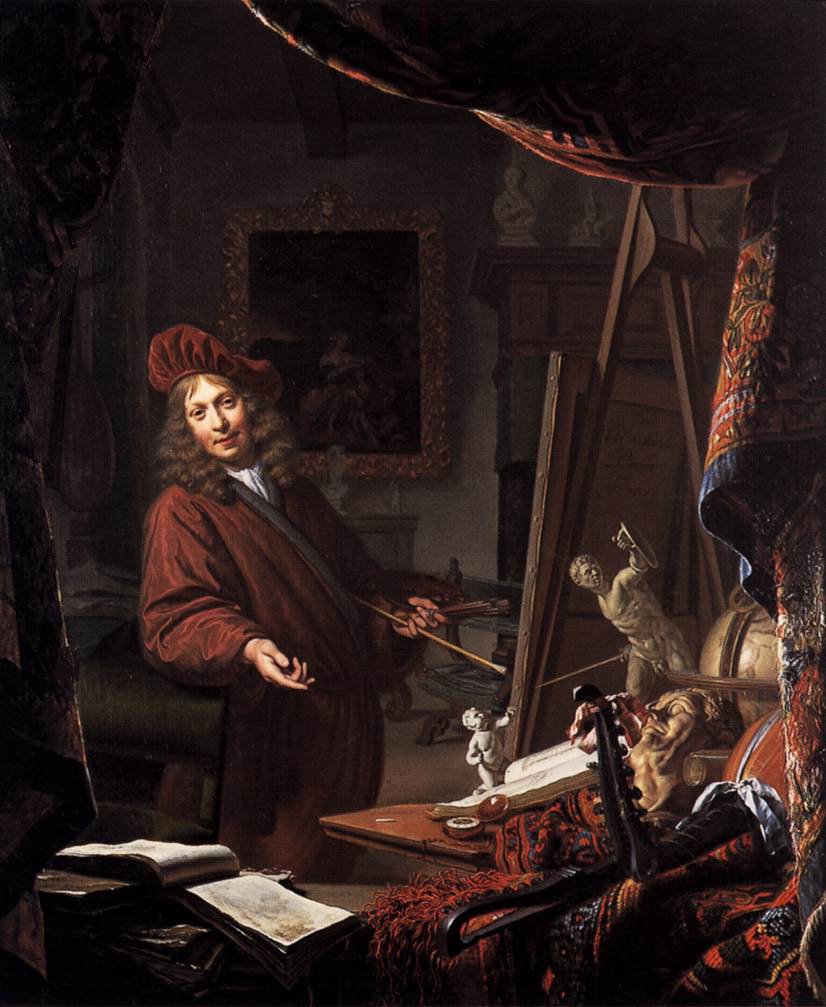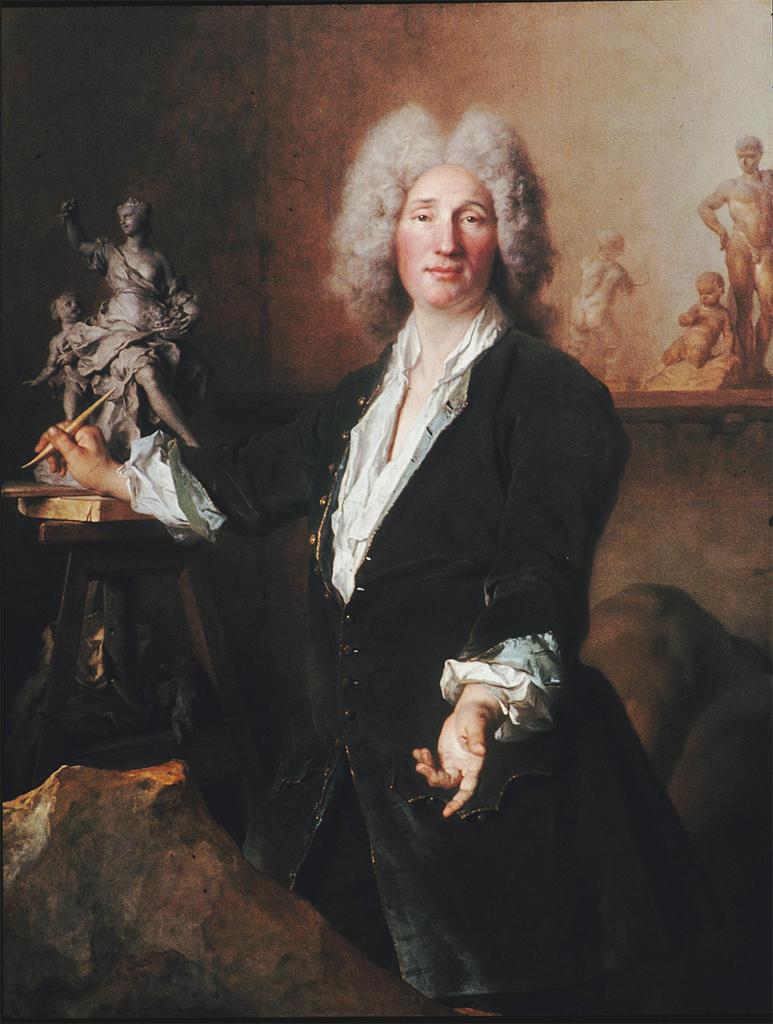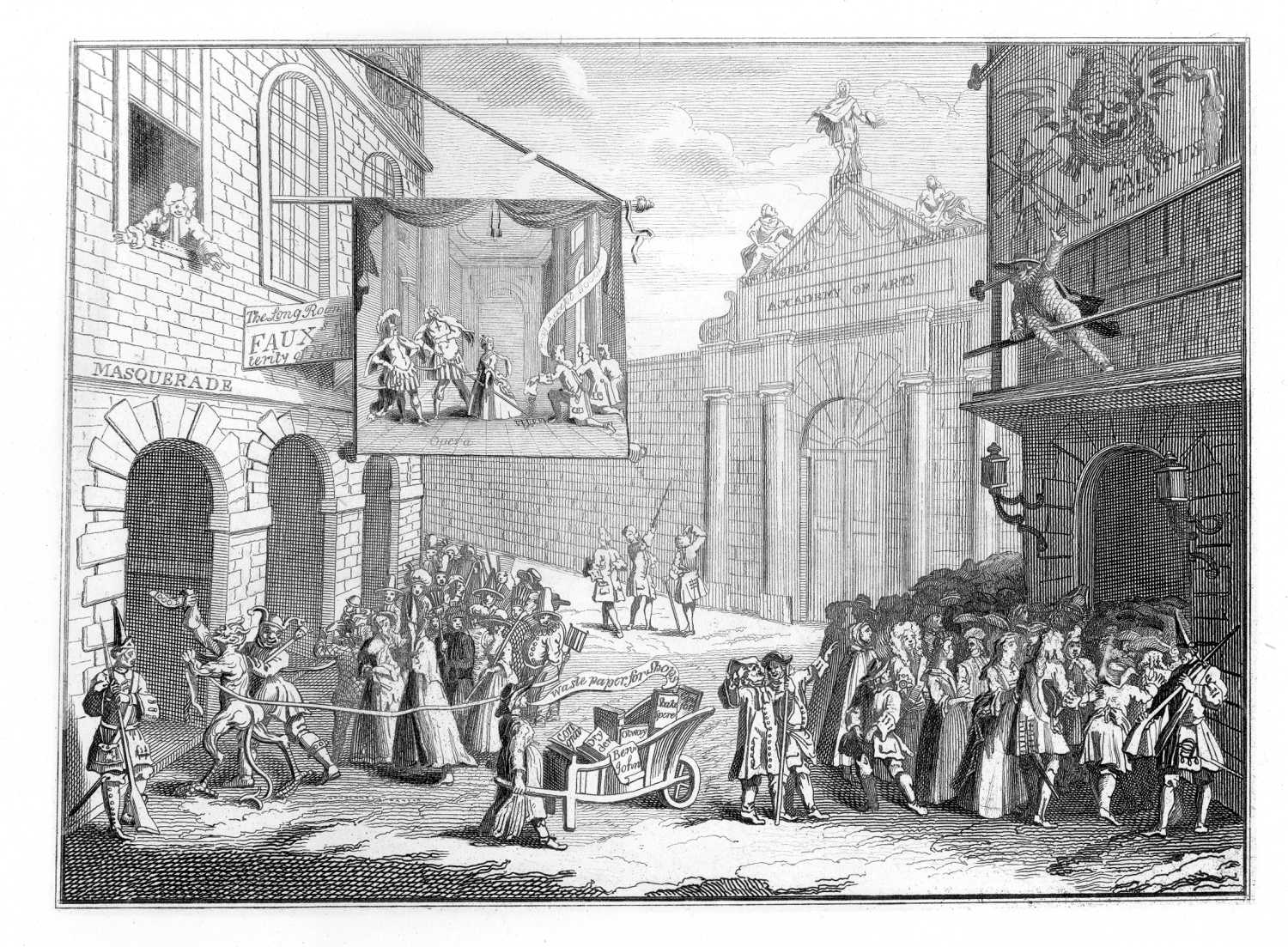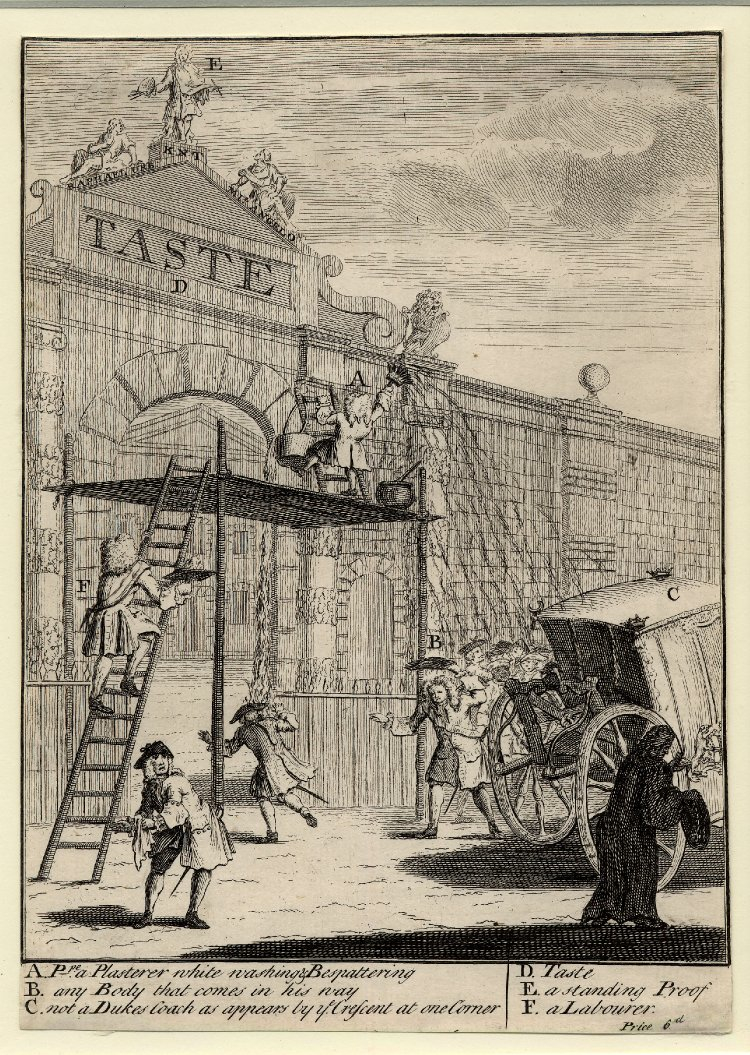"Men of Labor, Men of Leisure: Artists in Early 18th-century England" Part 3 of 3
 (continued from Part 2)
(continued from Part 2)
Self representation was an important mode for late seventeenth- and early eighteenth-century artists to work out the boundaries between labor and leisure. Among paintings and prints which portray artists, the overwhelming majority emphasize their gentlemanly status. This is achieved through a series of conventions found in elite portraiture from the period. However, there is a smaller body of work, which emerges from the Dutch genre painting tradition. In the 17th-century, these paintings, such as this example by Edward Collier, often portrayed the artist in the studio. To some sense idealized, they nonetheless emphasized the artist as laborer. There was a strong moralizing tone to these pieces, which often included symbolic elements from vanitas paintings.
This tradition did not disappear in the 18th century. For example, a self portrait by Francois Boucher shows him in his studio — his frayed clothes and attentiveness to his work are clearly of a different order than the Gawen Hamilton’s painting of Thornhill and his friends. The emphasis here is on the labor of the artist. But, unlike Collier’s work, the skull of the vanitas tradition has been replaced by a classical bust.
William Hogarth’s Beer Street frames the artist in a slightly different way. Hogarth chooses to represent a sign painter as the embodiment of an English tradition. And in many ways, this is a rejection of continental fashions. However, as in Boucher’s image, this is an idealized vision of labor. Beer street presented its workers in an urban setting, but it used Virgilian tropes of pastoral labor — a world of well-fed workers in slightly frayed clothing who signify the virtue of work for a clientele that lives in a world quite apart.
On the other side of the spectrum was a tradition of self-representation that emerged from Renaissance traditions of portraiture. Perhaps most prevalent was the over-the-shoulder tradition, which was a consequence of painting oneself using a reflecting glass.
More consistently, we see representations of artists who are clearly not at work, but who are rather simply posing with the symbols of their respective specialities and tastes.
These works often emphasized the refinement of the sitter, as in this quite serious-looking representation of the character of the sculptor Grinling Gibbons.
In this image of George Vertue, the artist has transcended his role as a painter and has adopted the iconography of the collector. He sits here with a print in his hand, indicating that his profession is that of an engraver, but the scene indicates a man of virtù — a term used by contemporaries to evoke the idea of a man of taste and polite learning. It displays him no longer as a man of labor, but a man of leisure.
Vertue’s portrait displays a certain dignity and restraint, found in much portraiture created for the middling orders, but there was a tradition within elite portraiture that defied this convention. Beginning in the late 17th century, and continuing through much of the 18th century, this tradition conveyed a sensuousness that sometimes bordered on the libertine. This tradition emphasized a particular form of elite masculinity that expressed virility, confidence, and sometimes even danger.
Godfrey Kneller’s late 17th-century self portrait hints at these characteristics — the red cloth, his gaze, and of course the print of the Venus. The fact that he sits among objects of learning as well as a skull, an icon of the vanitas form, actually accentuates the sensuality of the piece.
This tradition often hints at a Rabelaisian “Fais ce que voudras” character of its sitters, and the artists seem to be participating in a social world that is hardly polite.
These paintings flirted with an elite libertine tradition that often utilized a particular mode of presentation which we often refer to as the swagger pose.
In England, the swagger portrait traces its history to the Renaissance, with its first culmination in the art of Anthony Van Dyck and the court of Charles I. It presented its sitters as people of rank, apart from the commoners. The sitter takes a grandiose pose, surrounded by icons of wealth and opulence. These are paintings of conspicuous display. They sometimes flirt with the sexual, but they are always sensual.
James Thornhill adopted some of the elements of this grand manner in his massive wall paintings for Greenwich Hospital in 1707. Here, we can see him connecting himself to the Protestant succession in England. He is to some extent part of the royal household. The tools of his trade, his brush and palette, has been tucked away behind him.
William Aikman’s painting of William Kent is one of the best representations of an artist in the swagger pose. Comparing his portrait to that of his patron, the 3rd Earl of Burlington, he is clearly represented as a painter, but a painter of privilege — a man whose life is so closely intertwined with the elite that he is able to be displayed in similar conspicuous modes.
That said, what is interesting about this is that the painting was commissioned by Kent’s patron, Richard Child, Viscount Castlemaine, for Wansted House where it hung on the mantel in the Great Hall. In effect, Kent becomes part of the Viscount’s own conspicuous display — part of his collection of virtù.
However, this was a rough and tumble world in which the display of self was a veneer to behind-the-scenes politicking. William Kent was particularly good at this and eventually outmaneuvered James Thornhill for position. William Hogarth, noticing the rapid ascent of Kent — embodied in such items as the Wansted House portrait and Edmund Stone’s dedication, not to mentioned the steady rain of patronage from Burlington’s circle — saw Kent as the embodiment of all that was wrong in the English art world: its emphasis on non-native styles coming from the continent, art as fashion rather than art as beauty, art as the display of aristocratic values — and, simply, some objectionable trends such as Italian opera. He saw the Burlingtonian artists — including Kent and Colen Campbell, and others — as well as their literary peers, such as Alexander Pope and John Gay, as an elite group of artists facilitating and managing this process.
The great gate of Burlington house in Piccadily, designed by Colin Campbell in 1718, became for Hogarth a useful icon to represent the failings of this world.
In the same year that Edmund Stone wrote his dedication to Kent (Part 1), Hogarth denounced the artist. In his print, Masquerades and Operas, Hogarth juxtaposed the various bad tastes of the town: in the foreground are crowds lined up for opera.
In the background is Burlington Gate, labelled with the satiric caption, “Academy of Art.” He hovers over Raphael and Michelangelo — representations of true genius and beauty who the Burlingtonians have abandoned in favor of inferior and fashionable artists and architects such as Kent, who caps the pediment.
He followed this up in 1732 with a more direct attack on the Burlingtonians, entitled Taste. Ironic in tone, taste is what is absent from their entire project. Again Kent tops the pediment. Meanwhile, Alexander Pope whitewashes the exterior.
Hogarth identifies the Earl of Burlington — letter F — simply as “A Labourer.” In fact, what Hogarth is suggesting is that fashionable artists have overturned both the aesthetic order and the social order. Patrons now work for the interests of the artist, regardless of their skills.
In effect, by so deeply immersing himself in the artistic world, the Earl is no longer a man of leisure, but a man of labor.
In the late seventeenth- and early eighteenth-century environment, the English artistic world was in a moment of massive flux. Changing attitudes towards commerce, status, labor, learning, patronage, and aesthetics meant that to compete, artists needed to take an active part in shaping discourses about the relationship between labor and leisure — and consequently, about the place of the practicing artist in the social hierarchy. These debates would culminate later in the century with the creation of a national academy for art, Reynolds’ discourses about learning and taste, and eventually the Romantic notion of the artist’s innate genius, sensibility, subjective emotionality, and the sturm und drang of artistic passions. In this process, the labor of the hands was severed from the labor of the mind and soul, splitting the English artistic community between those who conceptualized and those who labored — between the “true” artist and the craftsman.
